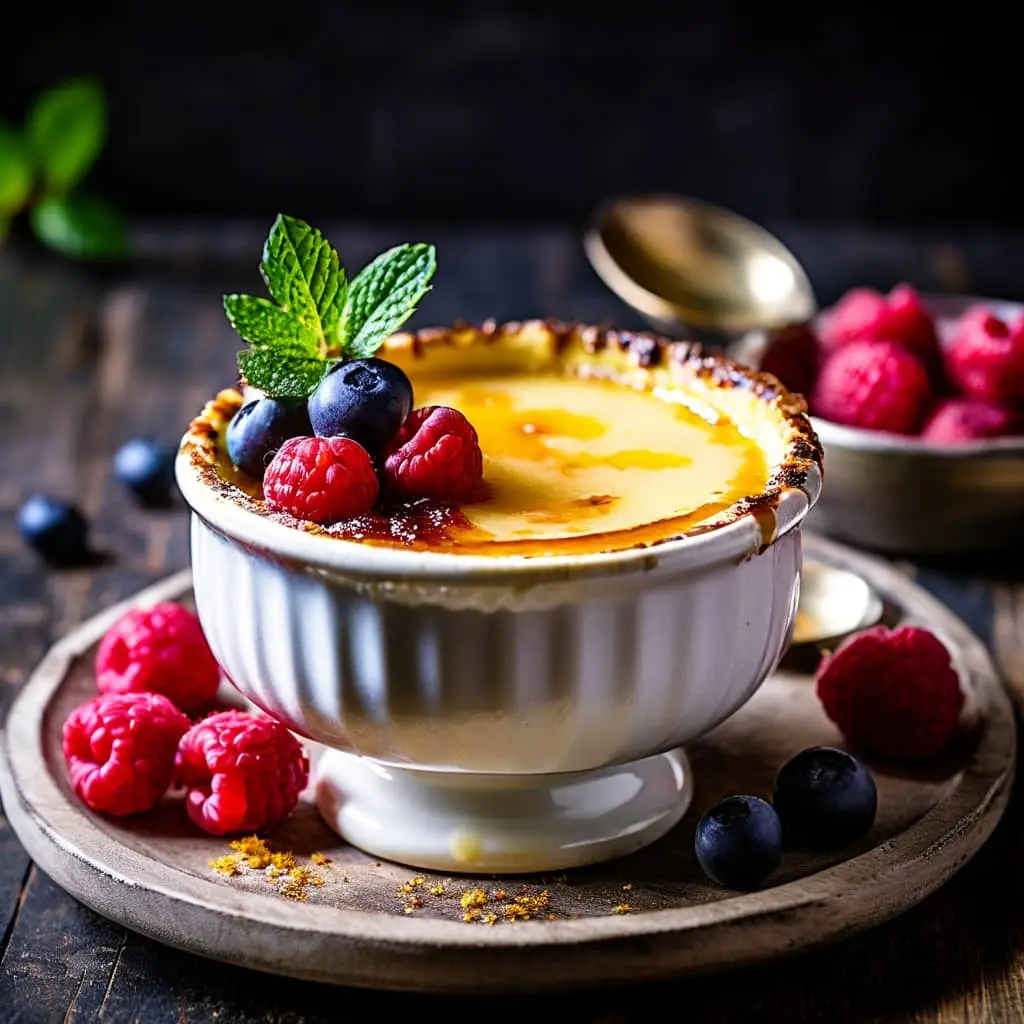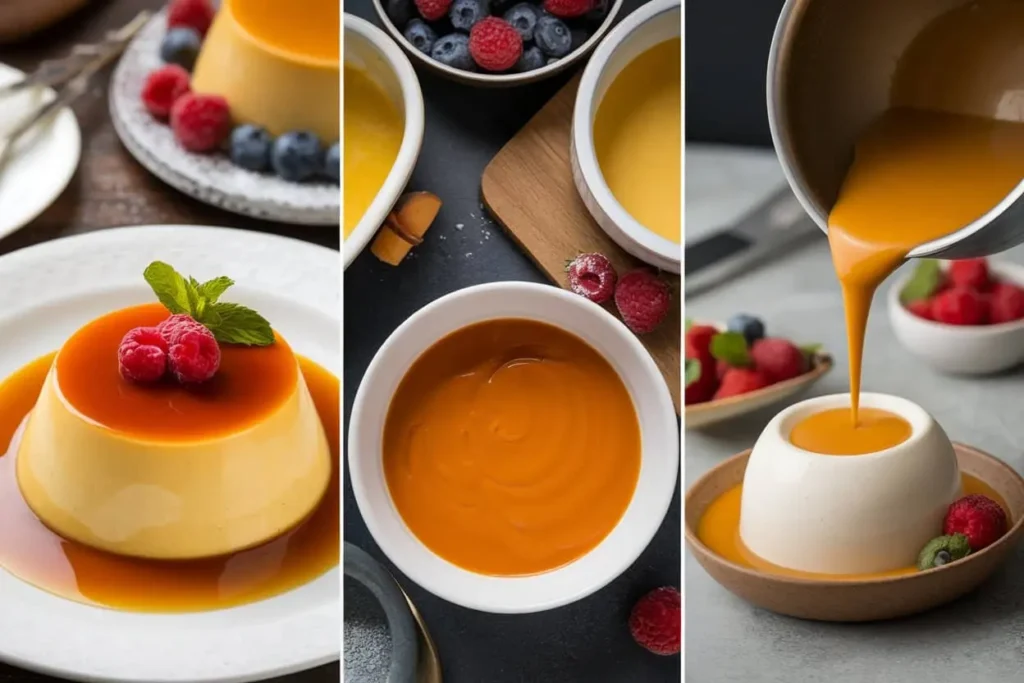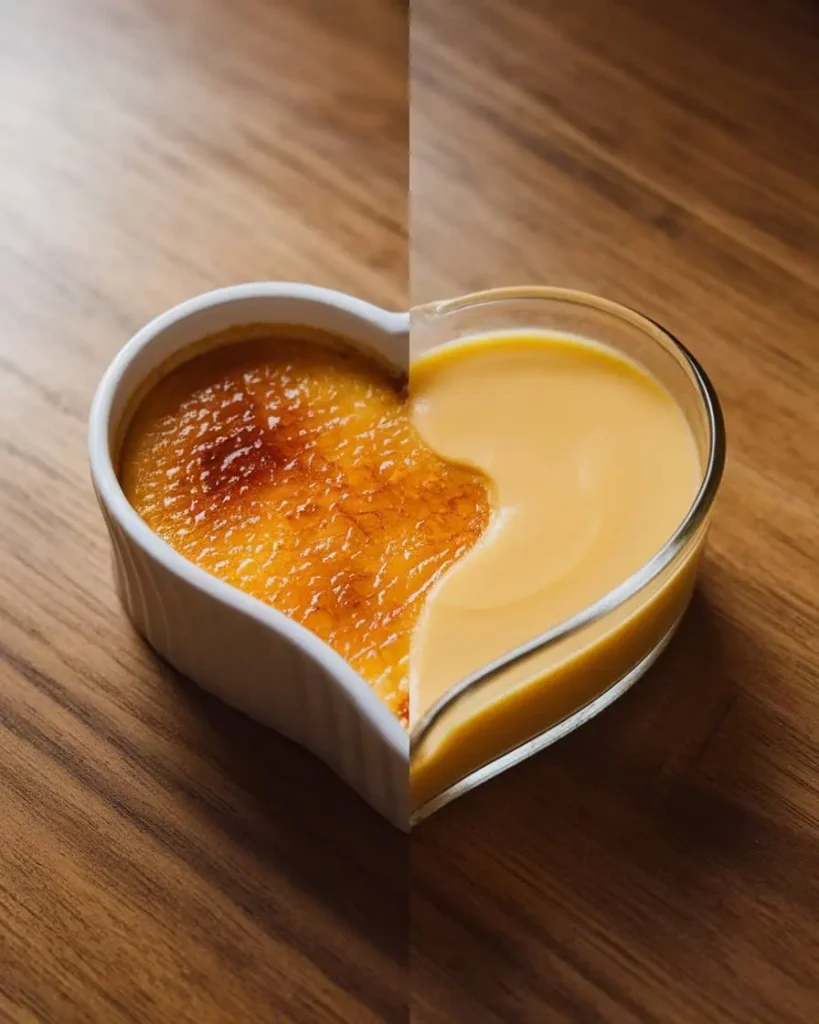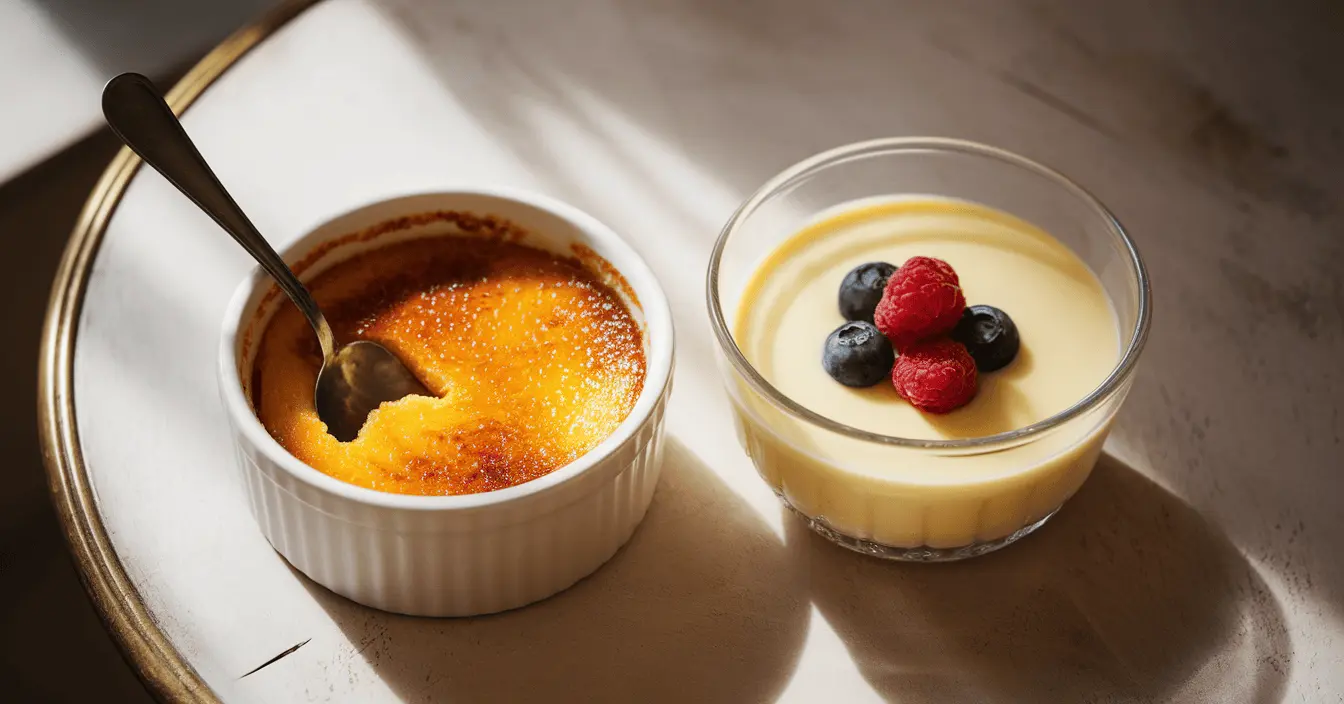When it comes to classic French desserts, many people wonder about the difference between crème brûlée and custard. Both treats share a rich, egg-based foundation and a creamy texture, but they have distinct characteristics that set them apart.
In this guide, we’ll explore the key differences between crème brûlée and custard, including their texture, preparation methods, and flavors. Whether you’re a home baker or a dessert lover, this comparison will help you decide which indulgent treat best suits your taste buds.

What Is Custard?
Custard is a smooth, creamy dessert made from a mixture of:
- Milk or cream
- Eggs or egg yolks
- Sugar
- Flavorings (such as vanilla, chocolate, or spices)

It can be baked or stirred to achieve different textures:
- Baked custard: Cooked in a water bath (bain-marie) for a firm yet silky consistency. Examples include flan and crème caramel.
- Stirred custard: Cooked on the stovetop, often used as a sauce or filling (crème anglaise and pastry cream).
Since custard doesn’t have a hard sugar topping, it’s softer and milder in taste than crème brûlée.
What Is Crème Brûlée?
Crème brûlée is a luxurious French dessert made with a rich egg custard base and topped with a layer of hardened caramelized sugar.
Key Characteristics
- Texture: Silky smooth with a crispy sugar crust.
- Flavor: Rich and decadent, with deep caramel notes.
- Preparation: Baked in small ramekins, then chilled before caramelizing the sugar topping.
- Signature Feature: The caramelized sugar layer is created using a kitchen torch or broiler.
🔗 Related: Learn the secret behind achieving the perfect caramelized sugar crust in crème brûlée.
How It’s Made:
- A custard mixture (heavy cream, egg yolks, sugar, vanilla) is baked in individual ramekins.
- Once chilled, a layer of sugar is sprinkled on top.
- The sugar is caramelized with a torch or broiler until it forms a golden-brown crust.
The Difference Between Crème Brûlée and Custard
Though both are egg-based desserts, the major differences lie in their texture, sweetness, and preparation.

| Feature | Crème Brûlée | Custard |
|---|---|---|
| Texture | Smooth inside, crispy caramelized top | Silky, smooth throughout |
| Sweetness | Slightly sweeter due to caramelized sugar | Milder sweetness |
| Cooking Method | Baked and topped with caramelized sugar | Can be baked or stirred |
| Serving Style | Individual portions in ramekins | Served in bowls, tarts, or pastries |
| Complexity | Requires caramelization, more effort | Easier to make |
Similarities Between Crème Brûlée and Custard
Despite their differences, these desserts share some key characteristics:
- Both are egg-based, relying on the coagulation of eggs to create their structure.
- Both have a smooth, creamy texture when properly prepared.
- Both are typically flavored with vanilla, though variations exist.
- Both require slow cooking to prevent curdling.
Popular Variations & Serving Suggestions
Both crème brûlée and custard can be customized with different flavors and toppings:
Popular Crème Brûlée Variations
- Chocolate Crème Brûlée – Made with cocoa or melted chocolate.
- Espresso Crème Brûlée – Infused with strong coffee.
- Lavender or Citrus Crème Brûlée – Uses floral or citrus zest for unique flavors.
Popular Custard Variations
- Caramel Custard – Similar to flan, with a caramel sauce.
- Chocolate Custard – Cocoa-infused for a deep, rich taste.
- Fruit-Infused Custard – Raspberries, citrus, or mango for a refreshing twist.
🔗 Related: Try a creative take on crème brûlée with this savory crab brûlée recipe.
Best Ways to Serve Each Dessert
- Crème brûlée: Chilled, with fresh fruit, whipped cream, or espresso.
- Custard: Warm or cold, topped with berries, nuts, or caramel sauce.
Frequently Asked Questions (FAQs)
1. What is the main difference between crème brûlée and custard?
- Crème brûlée has a hard, caramelized sugar topping, while custard does not.
- Crème brûlée is typically richer and sweeter than standard custard.
2. Which is easier to make, crème brûlée or custard?
- Custard is easier since it doesn’t require a caramelized sugar topping.
- Crème brûlée needs additional steps for torching or broiling the sugar layer.
3. Can I make crème brûlée without a torch?
Yes! You can use an oven broiler to caramelize the sugar—just watch carefully to prevent burning.
4. How do I prevent the custard from curdling?
- Use a water bath when baking.
- Cook at low heat to prevent overcooking.
- Strain the mixture before baking for extra smoothness.
5. Can I experiment with flavors in crème brûlée and custard?
Absolutely! Both desserts can be infused with different flavors, such as chocolate, coffee, citrus, or floral notes.
Final Thoughts
Both crème brûlée and custard are delicious, creamy desserts, but they offer different textures and experiences:
- If you love a crispy caramelized topping, go for crème brûlée.
- If you prefer a silky, melt-in-your-mouth dessert, classic custard is your best bet.
No matter which one you choose, both will satisfy your sweet cravings! Want to perfect your caramelization technique? Check out this guide to caramelizing sugar.
